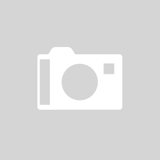China continues to challenge US aerial superiority with its Tiangang guided bomb

{loadposition bannertop}
{loadposition sidebarpub}
As reported by China Defense Blog on January 19, 2025, the Chinese Tiangang 500kg Gliding Extended-Range GPS-Guided Bomb provides a practical solution to enhance precision-strike capabilities by leveraging its extensive inventory of bombs, reducing the need for entirely new munitions. Proposed by the state-owned company Norinco, this bomb, closely resembling the US-made AGM-154 Joint Standoff Weapon (JSOW), offers a longer range than the JDAM and achieves a circular error probability (CEP) of less than 15 meters, showcasing advanced capabilities for extended-range munitions. It builds upon China’s glide bomb development efforts, which began with the LS-6 series in 2006.Follow Army Recognition on Google News at this link
The Tiangang guided bomb, which weighs approximately 590kg, is capable of targeting various fixed installations, including communication hubs, military bases, missile sites, bridges, power stations, and storage facilities. (Picture source: Norinco)
This closely follows the recent test flights of two sixth-generation fighter prototypes, the Cheng-6 and Shen-6, developed independently by Chengdu Aircraft Corporation and Shenyang Aircraft Corporation. Both prototypes incorporate advanced stealth features, modular capabilities, and designs intended to reduce radar signatures and improve operational flexibility. These developments indicate significant progress in China’s ambition to challenge U.S. aerial dominance as the United States continues to struggle with its own sixth-generation fighter programs, the NGAD and F/A-XX initiatives.
The Tiangang bomb features a diameter of 377mm and weighs approximately 590kg (±15kg). Equipped with a GPS-based guidance system, it is capable of targeting various fixed installations, including communication hubs, military bases, missile sites, bridges, power stations, and storage facilities. Tests have demonstrated that it generates overpressure exceeding 25 kPa within a 45-meter radius and achieves a static destruction area of 47 square meters. Its extended range allows deployment platforms to remain beyond the reach of many air defense systems, improving survivability during missions.
China’s glide bomb development originated with the LS-6 series, introduced in 2006 by the Luoyang Optoelectro Technology Development Center. The LS-6 family includes precision-guided glide bomb kits compatible with multiple weights: 50kg, 100kg, 250kg, and 500kg. The 500kg LS-6 achieves a range of up to 60 kilometers when released from an altitude of 10,000 meters. The Tiangang bomb builds on this foundation, offering improved range capabilities while maintaining compatibility with existing systems.
The Tiangang’s performance invites comparisons with the AGM-154 JSOW, as its design and purpose are closely aligned with this U.S. counterpart. The Tiangang, developed by Norinco Group, offers a range exceeding 80 kilometers and a CEP of less than 15 meters, targeting fixed installations such as communication hubs and military bases. By contrast, the AGM-154 JSOW, manufactured by Raytheon, achieves ranges of approximately 22 kilometers from low-altitude releases and up to 130 kilometers from high-altitude releases, utilizing a GPS/INS system with optional imaging infrared guidance. Compared to the JDAM, the Tiangang demonstrates a superior range; the standard JDAM achieves up to 28 kilometers with a CEP of 5 meters under optimal conditions. However, the JDAM-Extended Range (JDAM-ER) narrows the gap by incorporating a wing kit to extend its range to approximately 80 kilometers.
The design and purpose of the Tiangang guided bomb closely resemble those of its U.S. counterpart, particularly the AGM-154 Joint Standoff Weapon, also known as the JSOW. (Picture source: US DoD)
Globally, glide bombs and modular guidance kits are increasingly valued for their ability to enhance the effectiveness of unguided munitions. Systems like the U.S. AGM-154 JSOW, Russia’s UMPK, and Pakistan’s Takbir glide bomb improve accuracy and operational range, enabling launch platforms to remain outside defended airspace. These upgrades are cost-efficient, repurposing existing bombs with advanced guidance modules and aerodynamic surfaces, making them highly effective in modern combat scenarios.
The concept of glide bombs dates back to World War II, with Germany’s Fritz X and Henschel Hs 293 introducing remote-controlled munitions for precision strikes, primarily against naval targets. Early systems faced accuracy challenges and required clear visibility from the launch aircraft but marked the advent of precision-guided munitions. Advancements in guidance systems, such as GPS and inertial navigation, have since significantly improved accuracy and standoff ranges, broadening their operational applications.
The primary advantage of glide bombs lies in their ability to deliver precise strikes from extended distances, keeping aircraft outside the range of air defense systems. Their modular nature allows unguided bombs to be converted into precision-guided munitions, offering a cost-effective solution for many militaries. Additionally, their small radar signatures and short flight times reduce vulnerability to interception, making them versatile for various missions.
For China, the Tiangang bomb provides a practical solution to enhance precision-strike capabilities by leveraging its extensive inventory of FAB-series bombs, reducing the need for entirely new munitions. This approach increases operational flexibility and cost-efficiency. By incorporating advanced guidance systems, the Tiangang bomb significantly enhances the effectiveness of China’s aerial munitions, bolstering its ability to conduct strategic operations with precision at extended ranges.

{loadposition bannertop}
{loadposition sidebarpub}
As reported by China Defense Blog on January 19, 2025, the Chinese Tiangang 500kg Gliding Extended-Range GPS-Guided Bomb provides a practical solution to enhance precision-strike capabilities by leveraging its extensive inventory of bombs, reducing the need for entirely new munitions. Proposed by the state-owned company Norinco, this bomb, closely resembling the US-made AGM-154 Joint Standoff Weapon (JSOW), offers a longer range than the JDAM and achieves a circular error probability (CEP) of less than 15 meters, showcasing advanced capabilities for extended-range munitions. It builds upon China’s glide bomb development efforts, which began with the LS-6 series in 2006.
Follow Army Recognition on Google News at this link
The Tiangang guided bomb, which weighs approximately 590kg, is capable of targeting various fixed installations, including communication hubs, military bases, missile sites, bridges, power stations, and storage facilities. (Picture source: Norinco)
This closely follows the recent test flights of two sixth-generation fighter prototypes, the Cheng-6 and Shen-6, developed independently by Chengdu Aircraft Corporation and Shenyang Aircraft Corporation. Both prototypes incorporate advanced stealth features, modular capabilities, and designs intended to reduce radar signatures and improve operational flexibility. These developments indicate significant progress in China’s ambition to challenge U.S. aerial dominance as the United States continues to struggle with its own sixth-generation fighter programs, the NGAD and F/A-XX initiatives.
The Tiangang bomb features a diameter of 377mm and weighs approximately 590kg (±15kg). Equipped with a GPS-based guidance system, it is capable of targeting various fixed installations, including communication hubs, military bases, missile sites, bridges, power stations, and storage facilities. Tests have demonstrated that it generates overpressure exceeding 25 kPa within a 45-meter radius and achieves a static destruction area of 47 square meters. Its extended range allows deployment platforms to remain beyond the reach of many air defense systems, improving survivability during missions.
China’s glide bomb development originated with the LS-6 series, introduced in 2006 by the Luoyang Optoelectro Technology Development Center. The LS-6 family includes precision-guided glide bomb kits compatible with multiple weights: 50kg, 100kg, 250kg, and 500kg. The 500kg LS-6 achieves a range of up to 60 kilometers when released from an altitude of 10,000 meters. The Tiangang bomb builds on this foundation, offering improved range capabilities while maintaining compatibility with existing systems.
The Tiangang’s performance invites comparisons with the AGM-154 JSOW, as its design and purpose are closely aligned with this U.S. counterpart. The Tiangang, developed by Norinco Group, offers a range exceeding 80 kilometers and a CEP of less than 15 meters, targeting fixed installations such as communication hubs and military bases. By contrast, the AGM-154 JSOW, manufactured by Raytheon, achieves ranges of approximately 22 kilometers from low-altitude releases and up to 130 kilometers from high-altitude releases, utilizing a GPS/INS system with optional imaging infrared guidance. Compared to the JDAM, the Tiangang demonstrates a superior range; the standard JDAM achieves up to 28 kilometers with a CEP of 5 meters under optimal conditions. However, the JDAM-Extended Range (JDAM-ER) narrows the gap by incorporating a wing kit to extend its range to approximately 80 kilometers.

The design and purpose of the Tiangang guided bomb closely resemble those of its U.S. counterpart, particularly the AGM-154 Joint Standoff Weapon, also known as the JSOW. (Picture source: US DoD)
Globally, glide bombs and modular guidance kits are increasingly valued for their ability to enhance the effectiveness of unguided munitions. Systems like the U.S. AGM-154 JSOW, Russia’s UMPK, and Pakistan’s Takbir glide bomb improve accuracy and operational range, enabling launch platforms to remain outside defended airspace. These upgrades are cost-efficient, repurposing existing bombs with advanced guidance modules and aerodynamic surfaces, making them highly effective in modern combat scenarios.
The concept of glide bombs dates back to World War II, with Germany’s Fritz X and Henschel Hs 293 introducing remote-controlled munitions for precision strikes, primarily against naval targets. Early systems faced accuracy challenges and required clear visibility from the launch aircraft but marked the advent of precision-guided munitions. Advancements in guidance systems, such as GPS and inertial navigation, have since significantly improved accuracy and standoff ranges, broadening their operational applications.
The primary advantage of glide bombs lies in their ability to deliver precise strikes from extended distances, keeping aircraft outside the range of air defense systems. Their modular nature allows unguided bombs to be converted into precision-guided munitions, offering a cost-effective solution for many militaries. Additionally, their small radar signatures and short flight times reduce vulnerability to interception, making them versatile for various missions.
For China, the Tiangang bomb provides a practical solution to enhance precision-strike capabilities by leveraging its extensive inventory of FAB-series bombs, reducing the need for entirely new munitions. This approach increases operational flexibility and cost-efficiency. By incorporating advanced guidance systems, the Tiangang bomb significantly enhances the effectiveness of China’s aerial munitions, bolstering its ability to conduct strategic operations with precision at extended ranges.





